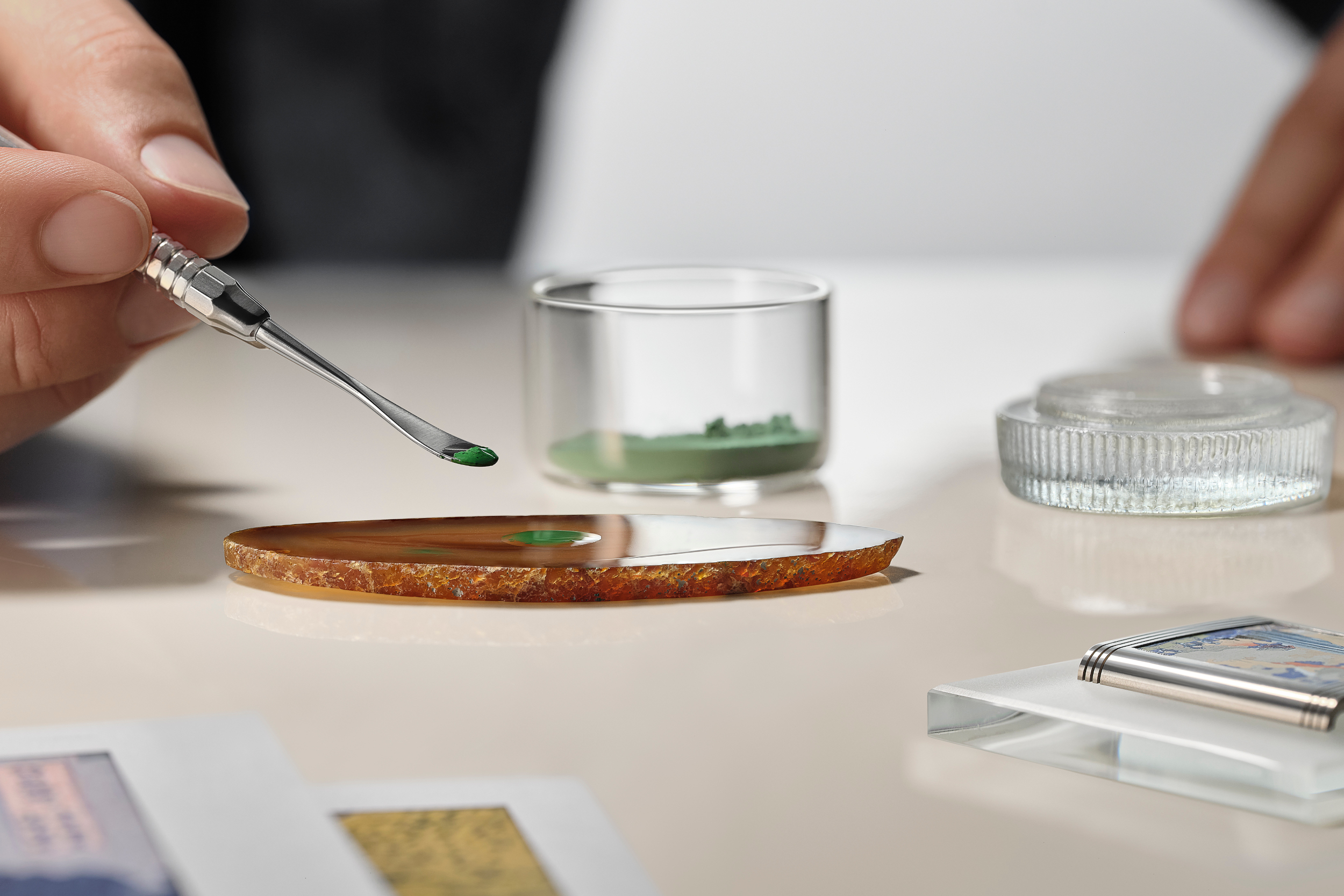On the occasion of Homo Faber 2024, Jaeger-LeCoultre pays homage to the host city with three new limited-edition Reverso Tribute Enamel timepieces. Last week we saw them in the beautiful setting on the San Giorgio Maggiore island.
Homo Faber’s mission to honour and promote craft in all of its forms closely mirrors Jaeger-LeCoultre’s commitment to support not only the craft skills of watchmaking but also the artistic crafts associated with Haute Horlogerie.
Last March the company released a long-term partnership with the Michelangelo Foundation and presented the Homo Faber Fellowship programme. Now at the Homo Faber event the spotlight is on the Manufacture’s in-house Métiers Rares™ (Rare Handcrafts) Atelier.
The Grande Maison launched three new limited-edition Reverso Tribute Enamel timepieces. The case-back of each piece features a miniature reproduction of one of Claude Monet’s paintings of Venice -showcasing the outstanding miniature painting, enamelling and guillochage techniques of the artisans.
The white gold timepieces – San Giorgio Maggiore at Dusk, The Grand Canal Venice, The Doge’s Palace – are limited editions, each of 10 pieces, with the manually-wound Jaeger-LeCoultre Calibre 822 inside.
As the Maison shares: ‘It was not only a feat of miniaturisation to perfectly mimic every detail of Monet’s paintings; the enameller also had to create an illusion of the impasto (the textured effect of thicker paint that the artist applied when he finished the canvases in his studio at Giverny) and recreate the dreamlike quality of the originals, with their fleeting effects of light and atmosphere.It required 14 layers of enamel to achieve the desired intensity and depth of colour – three base layers, four layers of painting and seven layers of translucent ‘fondant’, with up to 15 separate firings at up to 800° Celsius.
The three dials, decorated with hand-guilloché patterns beneath translucent coloured enamel, are an eloquent artistic response to the miniature paintings on the case-backs. The enamelling alone requires eight or nine hours of work for each dial, with up to five layers of enamel and six or seven separate firings at up to 800°C. The final challenge is the faultless application of the indexes (requiring tiny holes to be drilled through the pristine enamel) and the transfer of the chemin de fer minutes register.’
Claude Monet & Venice
Impressionism, a very important art movement developed in Paris in the 1860s by the founding members including Claude Monet, Edgar Degas, and Camille Pissarro, caused an “art-shock” with its loosened brushwork and lightened palettes of pure, intense colours.
Claude Monet (14 November, 1840 – 5 December, 1926) was the leading French Impressionist landscape painter. He exhibited in most of the Impressionist exhibitions, beginning in 1874, where the title of one of his paintings led to the naming of the movement. A period of travel followed in the 1880s, and in 1883 he acquired a property at Giverny, north-west of Paris, where he lived for 43 years, from 1883 to 1926.
Monet was 68 when he first visited Venice. In the autumn of 1908, he and his wife, Alice, spent ten weeks in the Italian city where they had originally come to rest. He didn’t plan to paint, as he didn’t like to deal with a subject that others had already captured so many times. But Monet was soon captivated by the charm of ‘La Serenissima’, finding the perfect location to explore the incredible interplay of water, light and architecture. The Venetian pictures are also special because, apart from his series on Rouen Cathedral, he rarely chose architecture as his subject. Venice gave him the opportunity to rethink his approach and to break away a little from his beloved water lilies.
We have many details about their Italian stay, as his wife wrote daily to her daughter, Germaine Salerou. This correspondence was published in 1986 by Germaine Salerou’s grandson (Philippe Piguet, Monet et Venise, published by Herscher in 1986).
Filled with enthusiasm, he painted according to a strict schedule and with a new method – as art historian Joachim Pissarro describes: ‘ In Venice, Monet divided his daily schedule into periods of approximately two hours, undertaken at the same time every day and on the same given motif. Unlike his usual methods of charting the changes of time and light as the course of the day would progress, here Monet was interested in painting his different motifs under exactly the same conditions.’ (Monet and the Mediterranean, New York: Rizzoli, 1977.)
He played with colours and light, experimented with times of the day and different locations, from the Grand Canal, through St Mark’s Square to the Doge’s Palace. In the Venetian paintings, the various shades and changes of colour become a tool – famous buildings come to life before our eyes without Monet having copied the exact details.
‘Although I am enthusiastic about Venice, and though I’ve started a few canvases, I’m afraid I will only bring back beginnings that will be nothing else but souvenirs for me’ – Monet wrote. The time proved him otherwise – his painting Le Palais Ducal was sold for £27,500,000 at Sotheby’s London auction in 2019. Three years later, another of Monet’s Venetian masterpieces, Le Grand Canal et Santa Maria della Salute, was sold at a New York auction for 56.6 million dollars (£45 million).
It was a prolific period: during his 10-week stay, Monet painted 37 images. In 1912, four years after the trip, 29 out of the 37 canvases were exhibited at the Gallery “Bernheim-Jeune” in Paris. The exhibition was a great success.
Photo credits: Jaeger-LeCoultre
All registered trademarks are property of their respective owners.
All rights reserved.













